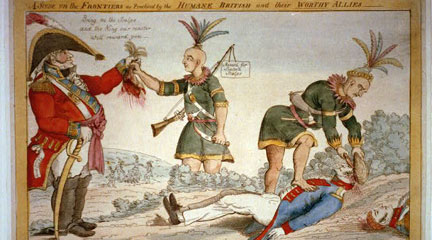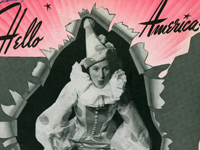Teaser
A great way for students to learn more about the War of 1812 and our nation's emblem: the Star-Spangled Banner.
Description
In this lesson students explore the War of 1812 and learn about the historical background of the national anthem and the American flag.
Article Body
Noting that textbooks for grades 3 through 8 often exclude the War of 1812, the Smithsonian’s History Explorer website designed this lesson to teach students about the origins and outcomes of this pivotal event in American history. This lesson also provides students with historical context for understanding one of the most popular and enduring texts in American history: "The Star-Spangled Banner," written by Francis Scott Key.
The strength of this lesson is that it provides a succinct, yet informative, narrative of the causes, course, and consequences of the War of 1812. This overview, which examines the origins of the national anthem, could be used as a basis for a lecture or directly given to students as a handout.
The discussion questions at the end of the narrative focus on the American and British motives for going to war and the importance of Washington, DC in the war. While these questions summarize important content, we recommend that teachers use the information from this lesson to help students analyze "The Star-Spangled Banner" as an historical text. For that purpose, the lesson contains several links to both background information and resources pertaining to both the anthem and the flag. (Note that this interactive feature also helps students understand the nature of historic preservation.)
This lesson provides such rich contextual information about the War of 1812 and about Francis Scott Key that we recommend modifying it and using it to inquire about the origins of "The Star-Spangled Banner" as it relates to the War of 1812.
Topic
The War of 1812 and the Star-Spangled Banner
Time Estimate
3 to 5 class periods
Rubric_Content_Accurate_Scholarship
Rubric_Content_Historical_Background
Yes
The main resource is a background essay.
It is brief, informative, and lays the groundwork for sourcing and contextualizing "The Star-Spangled Banner."
Rubric_Content_Read_Write
Yes
Requires students to read. Writing activities could easily be developed to support this activity.
Rubric_Analytical_Construct_Interpretations
No
Not explicitly. But several of the extensions and recommended resources do require students to interpret sources. (For an example, see this link)
Rubric_Analytical_Close_Reading_Sourcing
No
No, given that the main text is an authorless overview. But the available information can help students analyze "The Star-Spangled Banner."
Rubric_Scaffolding_Appropriate
Rubric_Scaffolding_Supports_Historical_Thinking
Rubric_Structure_Assessment
Yes
Discussion questions at the end ask students to consider multiple perspectives. However, no specific assessment criteria are included.
Rubric_Structure_Realistic
Yes
The reading level and language is appropriate for young learners.
Rubric_Structure_Learning_Goals
No
Useful resources, but the lesson is mostly a narrative about the War of 1812.


